Devang Shah and Sneha Vyas
Dr Sunirmal Sarkar is one of the busiest practitioners in West Bengal and is a professor of Materia Medica at the National Institute of Homoeopathy, Kolkata. In over 30 years of clinical practice, Dr. Sarkar’s tremendous success in pathological cases has compelled the rest of the homoeopathic world to witness what he is doing and how he is doing it. Dr. Sarkar is a dedicated and voracious reader of materia medica, repertory and clinical medicine. His affinity and desire for reading, depth of understanding, innovative thinking and extensive clinical practice, have created a unique approach towards each individual case. Dr. Sarkar is adept at using numerous approaches in Homoeopathy as per the demands of each individual case. This skillful approach has helped him treat many difficult cases successfully. He believes that a homoeopath has to be flexible in his approach. He quotes Hahnemann, where he used only one remedy then waited and watched. On the other hand he also studied Burnett, an allopath turned homoeopath, who also used herbs and organ remedies and cured 50 cases of tuberculosis. A homoeopath’s approach should vary from case to case, depending upon the geographic area, the economic condition etc., as these too should be born in a mind while treating the patient.
Dr. Sunirmal Sarkar has a very deep and infectious passion for Homoeopathy. His keen interest and enthusiasm inspired us to invite him to the ‘the other song- International Academy of Advanced Homoeopathy.’ This article summarizes his two day seminar held at the Institute in August, 2013. It gives us a glimpse of the different approaches he uses in his practice, illustrated with examples of cases and remedies. This will help the reader to broaden his horizon of homoeopathy. Of the many approaches that Dr. Sarkar uses in his practice, here are a few which he uses frequently.
IMPORTANCE OF OBSERVATIONS IN HOMOEOPATHIC PRACTICE
To be a good and successful homoeopath one should have the ability to apply all five senses. Dr. Sarkar gave an example of a case where he had seen of a patient suffering from lumbar pain who was very restless and could not sit or stand. The pain in the lumbar region was worse especially when the patient was sitting straight. Here, the remedy which first comes to mind would be Rhus tox, Dr. Sarkar advises that one should expand one’s horizon.
In Kent’s repertory there is a rubric (Roger van Zandvoort, Complete Repertory, Mac Repertory, 8.2.01, Professional, Kent Homoeopathic Associates)
The remedy Zingiber should be considered, and this way we can broaden our perspective and be open to more remedies.
UNDERSTANDING ALLOPATHIC MEDICINES AND THEIR SIDE-EFFECTS
One of the major facets in clinical practice is to understand the diagnosis, prognosis and the approach of modern medicine (allopathic approach). In every individual case, it is crucial to know about the allopathic medicine that the patient is on, along with the side-effects of each drug.
The use of oral contraceptives was on the rise in the recent past. With such a large number of patients rampantly using contraceptives, a homoeopath should be aware of these drugs and their side effects. e.g. estrogen is known to cause hepatitis, calculus formation or adenofibroma of the breast. So if a patient develops breast cancer and has a history of taking too many oral contraceptives then potentized estrogen should be strongly considered.
Similarly, Natrum salicylicum should be thought of in cases where the patient is suffering from an acute condition like dengue, influenza or cough and had resorted to antipyretics like Crocin, and later has ended up in a Gelsemium-like state of dullness. This remedy is known to minimize or neutralize the effects of analgesic and antipyretic medicines.1
USE OF LESS KNOWN INDIAN DRUGS
Indian remedies are often used in the ayurvedic system of medicine with excellent results. They are to be remembered with the other homoeopathic remedies. For example the Indian medicine Solanum xanthocarpus can be used in cases of cold and cough during change of weather where the patient is unable to talk.2 Similarly, we can think of using the medicine Ocimum sanctum, prepared from the Indian drug Tulsi (Indian herb) for cases of cold and cough in children where the child is irritable like Chamomilla or Nux vom and has the redness of lips like Ferrum or Sulphur.3
THE ORIGIN, DURATION AND PROGRESS OF A DISEASE
A homoeopath should study thoroughly the origin, duration and progress of the disease. E.g. a patient who is resident of Mumbai, develops a calcaneal spur. If, we carefully investigate the past history and find that there were recurrent episodes of malaria preceeding the complaint of spur, we can think of the remedy Aranea diadema.
Boericke’s Materia Medica (Michael Hourigan and David Kent Warkentin, ReferenceWorks Pro, 4.2.1.1, Kent Homoeopathic Associates)
Generals:
All symptoms of Aranea are characterized by PERIODICITY, AND COLDNESS, and great susceptibility to dampness. It is the remedy for the constitution favorable to malarial poisoning, where every damp day or place favors chilliness.
Extremities:
Bone-pains in extremities. Pain in OS CALCIS.
NEVER WELL SINCE
In our practice we often come across cases where the patient says that he has never been well since, or has not completely recovered after a certain illness. E.g. the patient who comes to us for the treatment of bronchial asthma says that he developed it after an episode of measles. On studying the patho-physiology of measles vaccine we know that it is known to activate mast cells which secrete histamine and this can result in bronchial asthma. So the possibility of prescribing the measles vaccine should be there in the mind of a homoeopath.
Our materia medica is rich in symptoms where the patient is not well since a particular disease. Carbo veg is one broad remedy which can be used in such conditions provided the symptoms match.
Boericke’s Materia Medica (Michael Hourigan and David Kent Warkentin, ReferenceWorks Pro, 4.2.1.1, Kent Homoeopathic Associates) – Carbo veg
Generals:
PERSONS WHO HAVE NEVER FULLY RECOVERED FROM THE EFFECTS OF SOME PREVIOUS ILLNESS.
Allen’s key notes – Carbo veg
Persons who have never fully recovered from the exhausting effects of some previous illness; asthma dates from measles or pertussis of childhood; indigestion from a drunken debauch; bad effects of a long ago injury; has never recovered from effects of typhoid (Psorinum).
USE OF CONCOMITANTS
One technique to arrive at the remedy is by the use of concomitants to the pathology. The best book to search for such concomitants is Boericke’s repertory. This idea of concomittants, which was discovered by Boenninghausen, is very useful in completing the case.
E.g. a patient having spasmodic whooping cough has excessive salivation. On examination, we see that the patient also has a cracked tongue. This cracked ulcerated tongue points to Nitric acid and this is confirmed by Boericke in his repertory as follows
Boericke’s Repertory (Roger van Zandvoort, Complete Repertory, Mac Repertory, 8.2.01, Professional, Kent Homoeopathic Associates)
E.g. A patient suffering from bronchial asthma says that he has had hemorrhoids from many years as well. Apart from this, there are no other characteristic symptoms in this case. In this case, we see two disease unrelated to each other existing simultaneously. The mere presence of two dissimilar diseases together in one subject makes it very peculiar and this symptom can form the basis of a good prescription
Boericke’s Repertory (Roger van Zandvoort, Complete Repertory, Mac Repertory, 8.2.01, Professional, Kent Homoeopathic Associates)
MODALITIES
When looking at the chief complaint, it is important to note the exact modalities of that complaint. The modalities should be viewed in a broader way like the time modality, life situations and life circumstances. The complaint must be understood with relation to the time period in the patient’s life. In order to understand this, the Knerr Repertory which is collection of clinical experiences of Hering’s Guiding symptoms, is very useful.
Some examples to understand this idea:
Knerr Repertory (Roger van Zandvoort, Complete Repertory, Mac Repertory, 8.2.01, Professional, Kent Homoeopathic Associates)
Mind; SAD; climacteric period, during (1): 3Tabacum Mind; DEPRESSED; childbirth, after, in consequence of being told of slight laceration (1): 2thuj.
Mind; SAD; morning, in (1): alum.
Mind; WEEPING; eruptions, with (1): 3 Coffea
Mind; WEEPING; face; neuralgia (1): 3 Cupr-acet.
Mind; WEEPING; muscular atrophy, in (1): 3 Calcarea
COMBINATION OF ORGANS
Sometimes the peculiarity in the case can be expressed by observing the organs involved. When a patient’s complaints involve a pathology in two organs or more, then this combination of affected organs itself becomes a peculiarity. In such a case, remedies which have this exact combination of organs must be investigated and studied further.
E.g.
Boericke Materia Medica (Michael Hourigan and David Kent Warkentin, ReferenceWorks Pro, 4.2.1.1, Kent Homoeopathic Associates)
– Kali bi
The special affinities of this drug are the mucous membrane of stomach, bowels, and air-passages; bones and fibrous tissue. Kidneys, heart, and liver are also affected. Incipient parenchymatous; nephritis. Nephritis with gastric disturbances. Cirrhosis of liver. Anaemia and absence of fever are characteristic. General weakness bordering on paralysis. It is especially indicated for fleshy, fat, light complexioned persons subject to catarrhs or with syphilitic or scrofulous history. Symptoms are worse in the morning; PAINS MIGRATE QUICKLY, rheumatic and gastric symptoms alternate. More adapted to subacute rather than the violent acute stage. Mucous membranes everywhere are affected. Catarrh of pharynx, larynx, bronchi and nose, and a TOUGH, STRINGY, VISCID SECRETION is produced, which condition is a very strong guiding symptom for this drug. PERFORATION OF THE SEPTUM. Chronic atonic catarrh. Polypus. Dilatation of stomach and heart.
Here we see that the affection is in the stomach, liver, kidneys and heart. This combination of organs involved gives the case its individuality.
Lycopodium
For persons intellectually keen, but physically weak; upper part of body emaciated, lower part semi – dropsical; predisposed to lung and hepatic affections (Calcarea, Phosphorus, Sulphur); especially the extremes of life, children and old people.
This is the remedy which has both lung and hepatic affections.
Lithium carbonicum
Chronic RHEUMATISM CONNECTED WITH HEART LESIONS and asthenopia offer a field for this remedy. Rheumatic nodes. Uric acid diathesis. Whole body is SORE. Gout and tophi.
Here the rheumatism, heart affections, affections of the eye and uric acid diathesis give the strangeness in a case.
RELATION TO KNOWN REMEDIES
Many times, smaller remedies are forgotten among the many polychrest remedies. In clinical practice, one must study and comprehend homoeopathic remedies which are similar, or are complementary to these main remedies. The smaller remedies can be compared with the larger remedies.
E.g. Sanicula is hot like Sulphur, sweats like Silicea and has cravings like Calcarea carbonica.
Similarly
Angustura vera = Nux vomica like mind + Ruta like physical symptoms
Anthracinum = cancer + burning + Natrum like mind symptoms (i.e. consolation agg)4
TWO PATHOLOGIES
The other way to view the case is when there is a combination of two or more pathologies which have nothing in common; this can be taken as the peculiar characteristic of the case and can lead us to the appropriate homoeopathic remedy.
E.g. if we study the remedy Formica rufa; it is very well known in arthritis as well as for curing nasal polyps. Here pathophysiology of arthritis has no connection to development of polyps. So in a case where we see arthritis as well as polyps existing together Formica rufa should be considered.5
SMALL REMEDY IN A BIG SYMPTOM
While studying the repertory, one tends to overlook the smaller remedies mentioned in a bigger rubric. However, these smaller or rather less proven remedies should be examined in a suitable case.
e.g. if a the patient complains that he has cough which is worse while lying down, we study the rubric.
Here we see that all the 3 mark remedies are common or polycrest remedies like Apis, Ars alb, Bryonia, Causticum, Conium, Hyoscyamus, Kali Carbonicum, Phosphorous, Pulsatilla, Rhus tox, Rumex, Sabadilla, Sepia, Sanguinaria and Sulphur.
The rare or less proven remedies are Aralia racemosa, Kreosote and Mezerium.
Careful attention should be given to these less proven remedies, especially Aralia r in the above case, as this drug is known to have its prime effect on the respiratory tract.
Boericke’s Materia Medica (Michael Hourigan and David Kent Warkentin, ReferenceWorks Pro, 4.2.1.1, Kent Homoeopathic Associates)
Aralia racemosa
This is a remedy for asthmatic conditions, with COUGH AGGRAVATED ON LYING DOWN.
ORGAN-SPECIFIC REMEDIES
The organ based remedies were introduced by French homoeopath Bernoville. He investigated various organ specific remedies. He would specifically call these drainage remedies, where the remedy is specifically indicated for that specific organ. We can find many examples of this, im our Materia medica.
Boericke mentions the remedy Tribulus terrestris as follows; (Michael Hourigan and David Kent Warkentin, ReferenceWorks Pro, 4.2.1.1, Kent Homoeopathic Associates)
An East Indian drug useful in urinary affections, especially dysuria, and in debilitated states of the sexual organs, as expressed in seminal weakness, ready emissions and impoverished semen.
The remedy Ceanothus is well known for spleen affections. Boericke writes that this remedy seems to possess a specific relation to the spleen. Ague cake of malaria. A left-sided remedy generally. Anemic patients, where liver and spleen are at fault. (Michael Hourigan and David Kent Warkentin, ReferenceWorks Pro, 4.2.1.1, Kent Homoeopathic Associates)
There are many such drainage remedies in our Materia medica like Berberis vulgaris for renal calculi, Fel tauri for gall stones, Cardus marianus for liver etc.
REMEDIES MADE FROM THE SAME ORGAN
There are a few remedies that are made out of the organ itself, and they are very useful in homoeopathic practice. This approach was originally given by Dr. Constantine Hering.
For example: Giving Retina 200, for a patient with retinitis pigmentosa.
The other organs that have been potentized and used in practice are as follows
Optic nerve
Retina
Duodenum
Carcinoma of liver
Carcinoma of stomach
Dr. Sarkar often uses these remedies as an Intercurrent for an effective cure.
REMEDIES RELATED TO HORMONES (SARCODES)
There are cases where the patient’s report shows a deficiency or excess of some hormones. In such cases, one can consider the use of the hormones themselves in potentized manner if the symptoms correspond.
E.g. if a patient exhibits symptoms like moon face, obesity, swelling of the neck like a buffalo hump. All the investigations are normal, yet symptoms of Cushing’s syndrome predominate. Here, we should think of the remedy Cortisone.
A case of mass lesion of head of pancreas with jaundice
This is a case of 48-year old male who had a lump in his abdomen and exhibited jaundice for over 1 ½ months. He had lots of hair growth on his body and a red mole on his chest. He was diagnosed with a mass lesion in the head of the pancreas. There was a history of eating rich food on a hot day which was followed by pain in abdomen. Since then he has not been well. He complains of frequent radiating pain from his chest to back, the pain being like a ring. This was accompanied by a burning sensation in the abdomen, worse from evening till night and better by sitting bent forward.
Associated with these complaints was a severe backache especially in the lumbar region. During the episode of pain, the patient was very restless, could not sit or stand comfortably and had to sit on the floor. He could not tolerate hunger which made him angry and irritable. Hunger was more pronounced at 10 a.m. but a few morsels caused satiety. He preferred to have hot food, desired extra salt, non-vegetarian food and sweets. Thermally, he could not tolerate heat, preferred cold rather than hot weather. He could not tolerate tight clothing and had profuse sweat on his chest. Generally, he felt worse between 3-5 p.m. and a short nap made him feel better. As far as his mental state was concerned, he liked being alone and shouted when he was angry. He dreamt of his dead mother and even people who were then alive appeared dead in his dream. Throughout the consultation, it was observed that his face had a frowning look. In the past he suffered from fistula in ano which was operated upon and his maternal aunt suffered from cancer.
Understanding
He was given Carcinosin 1M, 6 doses. This was followed by Aesculus hippocastanum 200, 6 doses for 2 days.
This was followed by sac lac and Chelidonium 1X 10 drops TDS.
Remedy indications:
Carcinosin – family history of cancer and red mole on the chest.
Aesculus was chosen based on the concomitant of backache which was located in lumbosacral region. The back gives out and he has to sit.
(Michael Hourigan and David Kent Warkentin, ReferenceWorks Pro, 4.2.1.1, Kent Homoeopathic Associates)
Allen’s Key notes – Aesculus
Severe dull backache in lumbo – sacral articulation; more or less constant; affecting sacrum and hips.
Back, “gives out “: during pregnancy, prolapsus, leucorrhoea; when walking or stooping; must sit or lie down.
Chelidonium was chosen on the following basis
Pain in chest radiating to the back
Worse evening till night
Desires hot food
Eating ameliorates
Constriction across abdomen as that of a string
Follow up after 1 month
There was a positive shift in his energy levels, his appetite improved and he felt definitely more active and energetic compared to the last month. During this visit he developed headache esp. over the root of the nose worse by stooping and jarring.
This was a concomitant to jaundice and the remedy Chionanthus was selected.
His bilirubin level has come down drastically as is indicated in reports given below
Follow up after 2 months of treatment
He continues to improve. His appetite has become normal. The weakness dullness and lethargy is no more. There is no pain in the abdomen. The most recent reports show that the bilirubin has come down to 1.9 mg/dl. He is still under treatment and enjoying good health.
Advice by Dr. Sarkar to young homoeopaths
My earnest appeal to the younger generation of homoeopaths is to try and learn Materia Medica and Repertory from their hearts. More importantly, apply it and have the guts and confidence to prescribe homoeopathic medicines even in pathological cases.
Editor’s Note: Dr. Devang Shah is In-house Consultant, the other song – International Academy of Advanced Homoeopathy.
Dr. Sneha Vyas is Resident Doctor, the other song – International Academy of Advanced Homoeopathy.
References:
1 – Sunirmal Sarkar, Dr. Sarkar’s Clinical Approach – Allopathic Understanding and Drug Side Effects, Just You See – Broadening the Homoeopathic Horizon, Page 35, First Edition, 2013, Homoeopathic Medical Publishers.
2 – Sunirmal Sarkar, Indian Drugs with Relation to Homoeopathic Remedies, Just You See – Broadening the Homoeopathic Horizon, Page 58, First Edition, 2013, Homoeopathic Medical Publishers.
3 – Sunirmal Sarkar, Indian Drugs with Relation to Homoeopathic Remedies, Just You See – Broadening the Homoeopathic Horizon, Page 53, 54, 55, First Edition, 2013, Homoeopathic Medical Publishers.
4 – Sunirmal Sarkar, Relation to Known Remedies, Just You See – Broadening the Homoeopathic Horizon, Page 37, First Edition, 2013, Homoeopathic Medical Publishers.
5 – Sunirmal Sarkar, Two Pathologies, Just You See – Broadening the Homoeopathic Horizon, Page 39, First Edition, 2013, Homoeopathic Medical Publishers.
About the other song:
About ‘the other song: International Academy of Advanced Homoeopathy’: ‘the other song’ is a world class medical centre which puts good health and well being at the core of an academic culture dedicated to complete patient care. Situated in Mumbai, this institute is one of a kind where a team of 35 doctors headed by Dr. Rajan Sankaran (the pioneer of the Sensation Approach in Homoeopathy) come together and practice Homoeopathy. At the Academy, the students and practitioners are trained in advanced Homoeopathic practices, using new methodologies in combination with the traditional approaches, all with the use of state of the art technologies. The Academy is also a meeting point for different schools of thought in Homoeopathy, where renowned homoeopaths – national and international, are invited to share their knowledge and experience, so that there is a constant flow of ideas on a common platform.
theothersong – International Academy of Advanced Homoeopathy*
1001,PeninsulaHeights,C.D.BurfiwalaMarg,JuhuLane, Andheri(W), Mumbai-400058,Maharashtra
T+9102242616666 www.theothersong.com
*Aunitof‘FoundationforVital Healing’

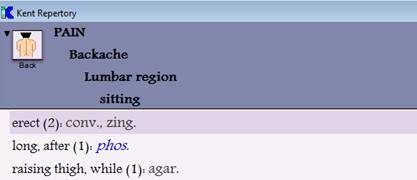
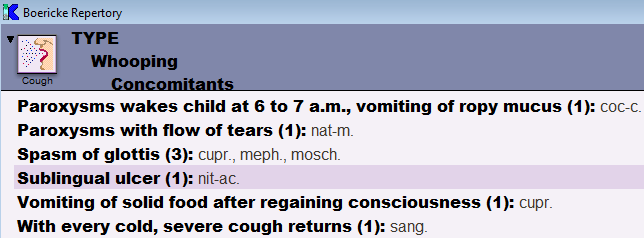

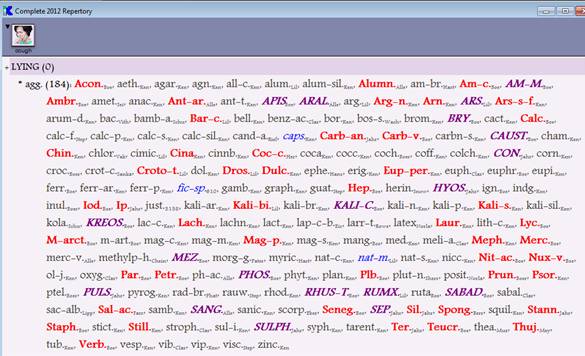
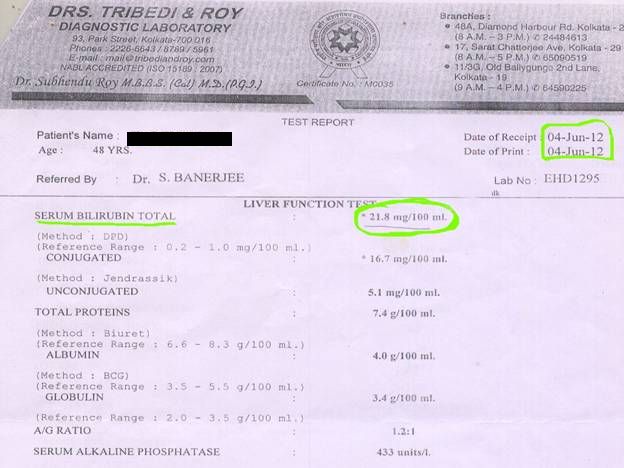
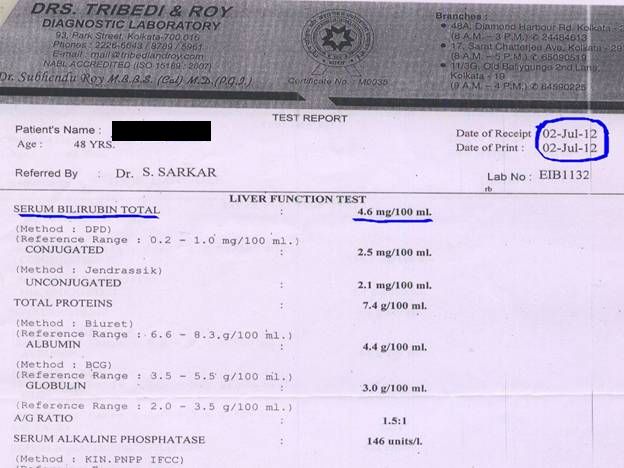
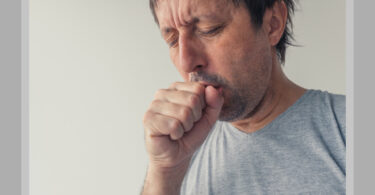
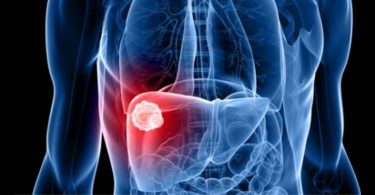
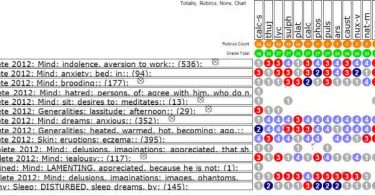
DEAR DR,
WE ARE GLAD TO NOTE THAT YOU SPECIALISE IN VARIOUS TYPE OF CANCER. WE SHALL BE GRATEFUL FOR YOUR PRACTICAL TIPS IN CURING THIS AILMENT
THANKS
[email protected]
Many thanks for giving new approaches to finding remedies for pathological cases.
Eye opening literature.